Caring for Your Christmas Tree
Don’t worry it is simple, a Christmas Tree is nothing but a giant cut flower, so taking care of it is pretty much the same process.
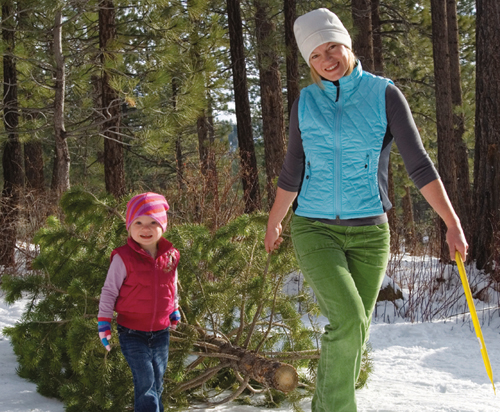
So you got your Christmas tree, brought it home and now you need to decide how you care for it until after the holidays? Don’t worry it is simple, a Christmas Tree is nothing but a giant cut flower, so taking care of it is pretty much the same process. Your main job is to keep the tree as moist as possible as long as it is in your home. The biggest danger to cut Christmas trees is the danger of fire when the tree has been allowed to completely dry out. By correctly treating the tree before it comes indoors, while it is indoors, and through the holiday you can keep the tree moist and beautiful by simply doing basic maintenance.
Before you put the tree into its stand:
- Prepare a large bucket full of warm water
- Cut ½ inch or more of the base of the tree off – Since the tree was originally cut sap and dirt can accumulate on the bottom and block the pores that take up water.By removing this old stump material you open up the channels that water will move through as it goes up into the tree.
- Set the tree into the bucket of water. The temperature of the water is not important, though adding packets of floral preservative can help, they are not required. Same goes for aspirin or sugar in the water, in small amounts they don’t hurt, but no one has really shown they help much either.
- Let it sit for a few hours, or as long as a few days, just check the water level to make sure that the cut end is always immersed and does not ever dry out. THIS IS KEY! Once the base of the tree has been allowed to dry out, the only way to fix the problem is remove the tree from the stand and cut another ½- 1” (2.5 cm) off the bottom of the tree and get it back into water.
- Preservatives? You can also buy products like Wilt-Pruf, Cloud Cover and Nu-Film, there products act as a sealant and help the tree keep water inside rather than having it evaporate. When you buy a tree ask them if they have treated their trees and if so you likely do not have to. If you cut your own tree in the wild you might consider applying these products.
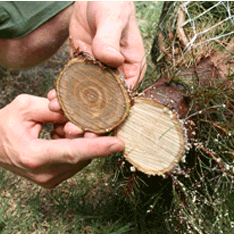 Cut ½ inch off the base of the tree. | 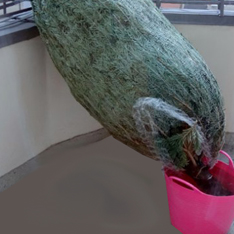 Soak the tree for a few hours. | 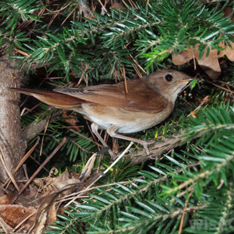 Discarded tree provides birds shelter. |
When putting the tree into the stand: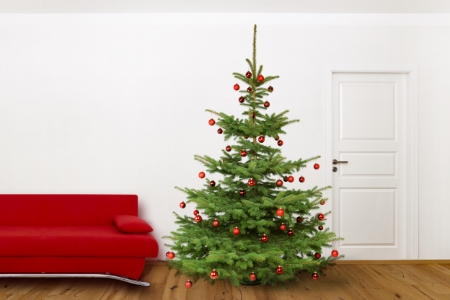
- First make sure there is a big enough reservoir for the tree, for every inch (2.5 cm) across the bottom of the cut stem there should be about a quart (950 ml) of water surrounding it in the stand. A cut Christmas tree can take up a lot of water, especially once it comes into a house with the heater on and it is strung with heat generating lights. NEVER let the tree dry out while it is indoors – just check the water in the stand once or twice daily.
- Misting your Christmas tree can help to keep moisture in the needles and branches. However don’t get carried away as water can damage decorations, presents, and stain carpeting or flooring beneath the tree. If you are misting, keep it very light and try to do it frequently rather getting the tree dripping wet.
When placing the tree in the house:
- Avoid heating or air ducts around the base of the tree, as they will only dry the tree out faster. Actually Christmas trees last much longer if they can be placed in cold areas, but that may not be practical.
- Try to use low heat emitting lights on your tree, they are safer and also do less damage in drying the tree out.
- Always turn off the tree lights when leaving the house or when going to bed.
- Monitor the tree for freshness. After Christmas or if the tree is very dry, remove it from the house.
When you remove the tree after the holidays
- Try laying it on its side near a bird feeder, many smaller birds like finches and chickadees like a little bit of protection while they feed. An old Christmas tree provides just the right amount of cover.
- Cut off the branches and use them to mulch over perennial beds, or small newly planted shrubs that might benefit from a little bit of wind protection.
- Even fish benefit from an old Christmas tree! A sunken Christmas tree in a large pond provides cover for smaller fish and some fishermen swear by the practice as a way to create a good fishing hole.




